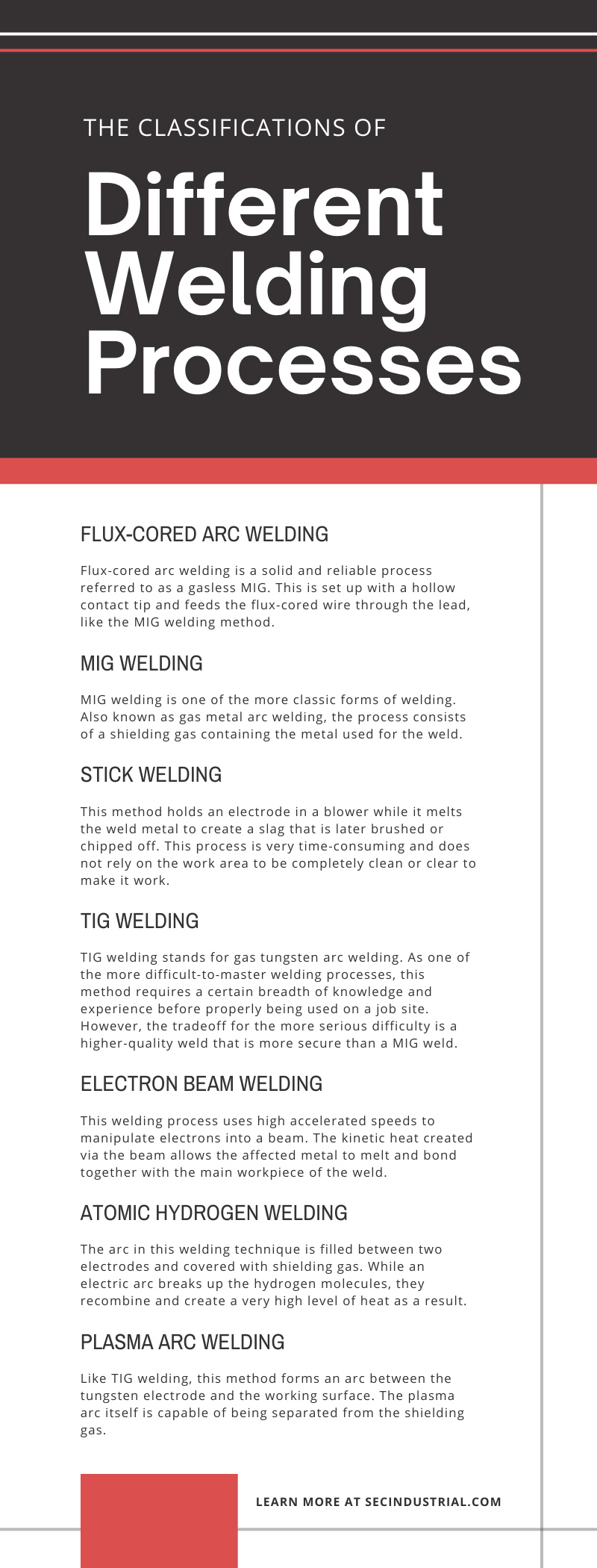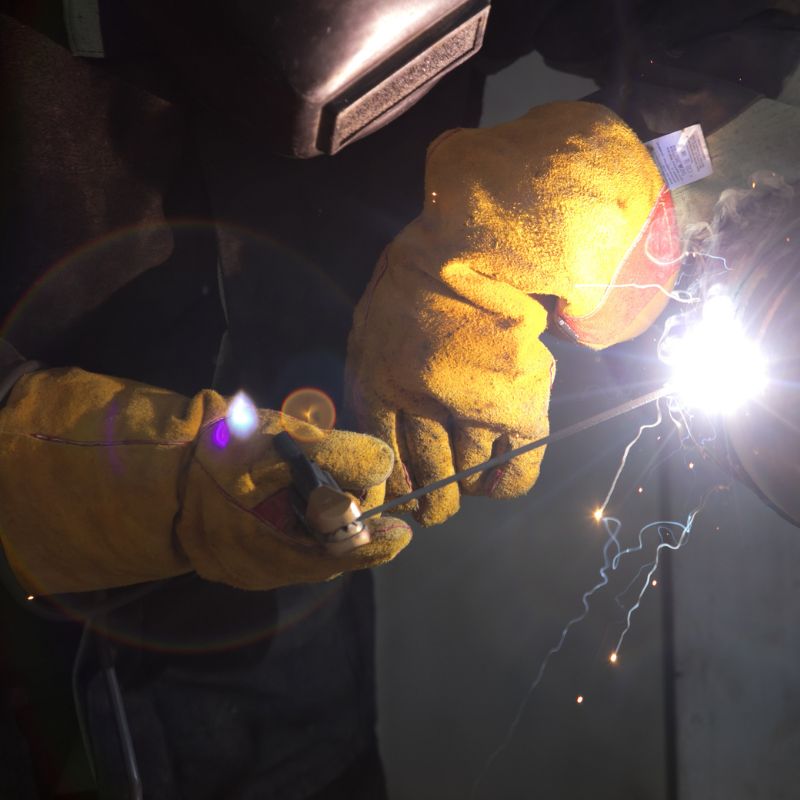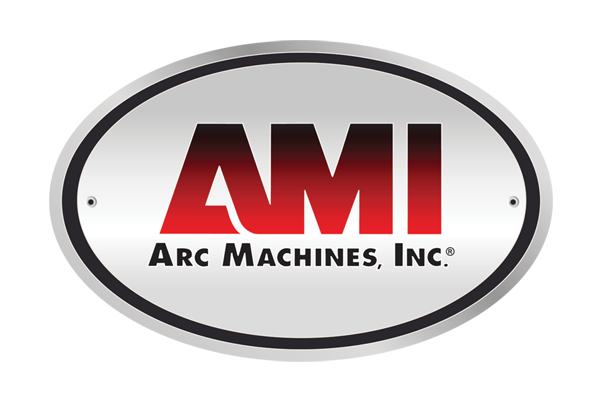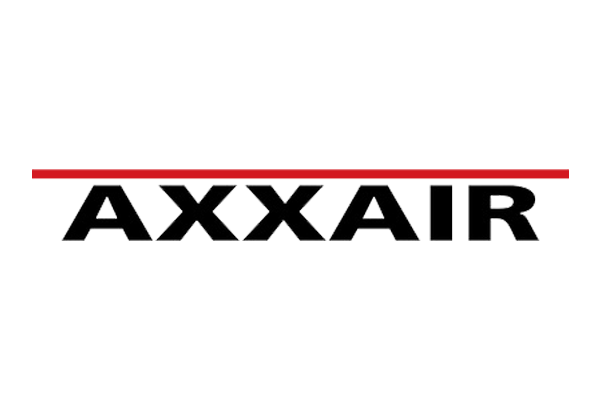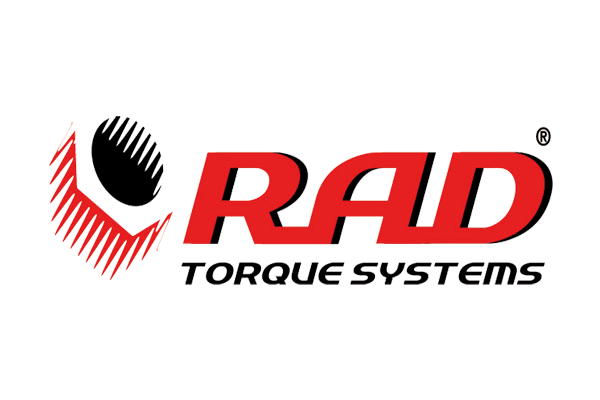The Classifications of Different Welding Processes
Welding is a flexible art capable of getting things done on an industrial and personal level. Different welding processes allow people to deal with different issues reliably and in the preferred medium to properly do the job. While it sometimes gets confusing to some people, each technique is unique to diversify from the others, so remembering them is less complex of a task. These are some of the classifications of different welding processes that are good to be aware of for those who are looking to deal with them regularly as a part of their job.
Flux-Cored Arc Welding
Flux-cored arc welding is a solid and reliable process referred to as a gasless MIG. This is set up with a hollow contact tip and feeds the flux-cored wire through the lead, like the MIG welding method. The difference is that the shield gas surrounds the melted coating while the arc melts through and creates slag. Welds used with this process are typically reserved for inexpensive projects. Flux-cored arc welding is typically used for smaller businesses and shops and personal welding projects in general.
One of the bigger benefits this process affords users is the capability to do so in high winds without worrying about dirt or rusty materials. On the other hand, the need to remove the slag remains that cause spatter in the welding process.
MIG Welding
MIG welding is one of the more classic forms of welding. Also known as gas metal arc welding, the process consists of a shielding gas containing the metal used for the weld. While burning onto the targeted surface, the wire is continually fed into the machine while a gas supply aids the process to allow it to continue. These welds are great in production welding but are not ideal where the heavy wind is a factor. When the wind comes into play, it has a chance to blow away the shielding gas, leaving the electrode wire vulnerable to instability and lack of heat control. MIG welding is great for beginners as it allows plenty of control and provides a clean weld when it is finished.
Stick Welding
Stick welding is one of the first created welding methods and is simple in theory. This method holds an electrode in a blower while it melts the weld metal to create a slag that is later brushed or chipped off. This process is very time-consuming and does not rely on the work area to be completely clean or clear to make it work. This is an easy and simple welding method to use and is relatively affordable too. One consequence, however, is that a lot of heat is generated with stick welding, and it is recommended to mitigate it while working.
TIG Welding
TIG welding stands for gas tungsten arc welding. As one of the more difficult-to-master welding processes, this method requires a certain breadth of knowledge and experience before properly being used on a job site. However, the tradeoff for the more serious difficulty is a higher-quality weld that is more secure than a MIG weld.
Gas tungsten arc welds have a more complex setup that is similar to the MIG welding process. However, rather than having metal be fed through the blower, there is a fixed tungsten electrode instead. This electrode is in the middle of the gas and arc, while the shielding gas surrounds it in the outer area. From there, a welding rod is held by hand and applied to the welding location while the welding spool melts and creates the weld. TIG welding is used for heavy industrial-level projects that require strong welds to ensure everything stays together and does not need to be observed or maintained regularly.
Electron Beam Welding
This welding process uses high accelerated speeds to manipulate electrons into a beam. The kinetic heat created via the beam allows the affected metal to melt and bond together with the main workpiece of the weld. While this beam is very powerful, it is important to know that this welding process can only be done in a vacuum. The absence of other gases helps ensure the beam is not dispersed. With those factors in mind, this method is operated with plenty of machinery and computer controls to ensure accuracy and quality.
Atomic Hydrogen Welding
The arc in this welding technique is filled between two electrodes and covered with shielding gas. While an electric arc breaks up the hydrogen molecules, they recombine and create a very high level of heat as a result. This method is an excellent tool for welding with tungsten as a method of producing one of the hottest possible heat levels. However, while this heat is extremely useful for welding together hard-to-melt metals, the hazards that come with it are also higher. People who work with atomic hydrogen welding focus more on the safety of the environment and the equipment, as the consequences become much greater should a mistake occur.
Plasma Arc Welding
Like TIG welding, this method forms an arc between the tungsten electrode and the working surface. The plasma arc itself is capable of being separated from the shielding gas. With a fine-bore copper nozzle, the plasma is forced through and constricts the fine point of heat. This process is great for making keyhole and non-keyhole type welds. Keyhole welding is when a concentrated arc penetrates slightly or completely through the working surface. As a result, the molten metal fills in the hole that was formed because of the keyhole weld.
The world of welding consists of several unique methods to get various jobs done. While certain techniques find a more well-rounded niche in different work environments, the need for secure welding on differing scales is important. There are numerous kinds of welding equipment, such as an automatic pipe spool welding machine. From the secure welding of a plane’s cockpit to something more casual like rollercoaster rails, the labor results are far-reaching and abundant. Hopefully, knowing about some of the classifications of different welding processes puts things into perspective.
